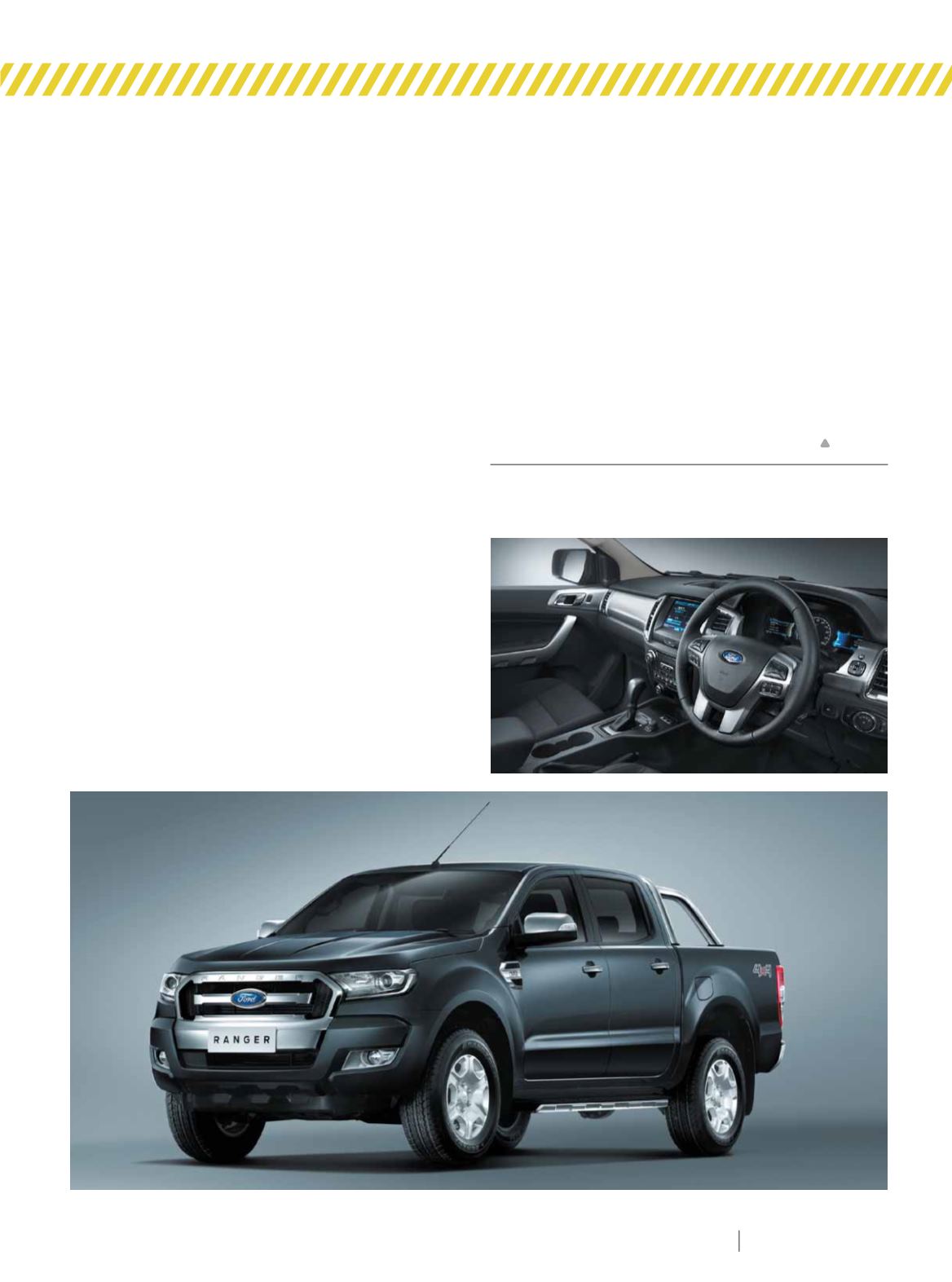

P L UMB I N G CO N N E C T I O N
W I N T E R 2 0 15
1 2 7
F
ord is preparing to release a heavily upgraded Ranger
utility, keeping the Australian-developed, Thai-built
workhorse fresh in the face of new-release opponents
including fully redesigned versions of the Mitsubishi Triton and
Nissan Navara.
The Blue Oval brand has set out to toughen up the exterior
design of the new Ranger, dubbed PX Series II, while
introducing extra cabin creature comforts and highly advanced
infotainment and safety technology.
Full Australian details were still to be released at the time
of writing, but some of the high-grade features introduced
to the ute include the ‘Sync2’ multimedia system, adaptive
cruise control, lane-departure warning, tyre pressure
monitoring, a fatigue-busting ‘driver impairment monitor’
and a reversing camera working in conjunction with front and
rear parking sensors.
The two Duratorq TDCi turbo-diesel engines currently in
service – a 2.2L four-cylinder and 3.2L five-cylinder unit – have
received upgrades designed to boost fuel efficiency by up to
22%, depending on the variant.
These include the addition of an automatic engine idle-stop
system on both engines, an updated exhaust gas recirculation
system on the 3.2L unit and the introduction of electric power-
assisted steering. The latter is said to benefit low-speed
manoeuvring and high-speed precision as well as economy.
The mechanical changes are also claimed to improve noise,
vibration and harshness (NVH) levels – the elimination of a
power steering pump used in a conventional hydraulically
powered system has reduced noise, for example – and together
with extra sound-deadening materials, improved insulation
and revised suspension tuning for improved ride comfort and
handling, Ford says the light truck’s refinement and dynamic
performance are better than ever.
The Australian designers have reworked the dashboard,
aiming for a more “comfortable, contemporary and car-like
environment” complete with a new central 8” touch screen,
dual-TFT instrument cluster and a 240V power socket.
The 3.2L engine continues to produce 147kW of power
and 470Nm of torque, while the 2.2L unit now develops
118kW/385Nm (up 8kW/10Nm). Both drive either the rear
or all four wheels through a six-speed manual or automatic
transmission.
The 122kW/225Nm 2.5L Duratec petrol, paired only with a
five-speed manual, carries over largely unchanged.
Ford
www.ford.com.auFORD RANGER
















